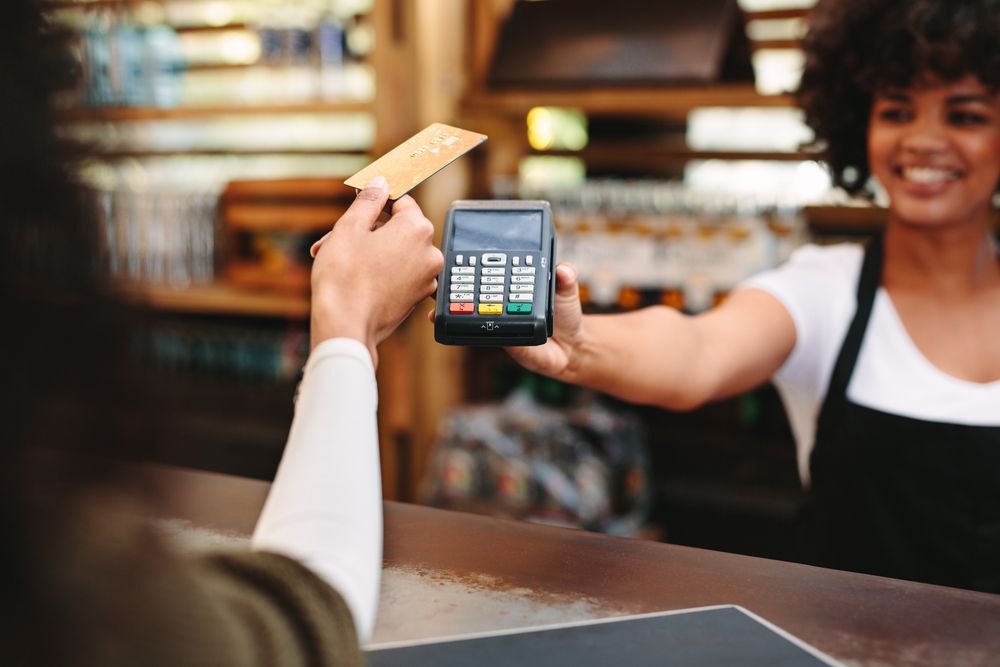The rise of contactless payments

In a part of the world more comfortable with cash on delivery (COD) rather than online or even card payments, the notion of contactless delivery has unleashed an operational shift for online retailers as well as brick and mortar shops that now encourage payment by card in a bid to curb the spread of Covid-19.
In a global consumer study conducted by Mastercard in March this year, 70 per cent of respondents in the Middle East and Africa (MEA) region stated they now use some form of contactless payments for safety and hygiene purposes with 81 per cent of the respondents saying they will continue to use contactless post-pandemic. We spoke with Gaurang Shah, senior vice president of digital payments & labs, Mastercard MEA to get a better understanding of the trends that have emerged in the contactless payments space.
1. What patterns have you seen since the start of the Coronavirus outbreak?
As people around the world practice social distancing, this has led a growing number of merchants to encourage consumers to pay using contactless methods over cash to avoid human-to-human contact.
In line with the mandate from global health authorities, we have noticed that governments and financial institutions across the region are stressing on the importance of adopting contactless and mobile payment methods to avoid contact with payment terminals or dealing with cash. Central Banks across the region, notably, in Saudi Arabia, Qatar, Bahrain and Egypt have also increased the cardholder verification method (CVM) limit to improve purchaser experiences.
Several players across industries including food delivery aggregators, retailers, supermarkets and gas stations are adapting to the changing environment. They are also encouraging customers to adopt contactless and mobile payment methods and use apps and online stores to conduct transactions to limit human-to-human contact. As this situation unfolds, we continue to see a rise in people who are embracing these safe and hygienic solutions as their preferred form of payment every day.
2. What has been the growth rate of contactless payments?
In 2019, the Middle East and Africa region saw 200 per cent growth in contactless transactions. Today almost 1 in 9 Mastercard transactions at point-of-sale (POS) terminals in MEA are contactless. We have worked with various industry partners and sectors in multiple markets to increase the use of digital and contactless payment technology in an effort to enhance safety, security, speed and convenience in the payment experience for cardholders.
In an era of digitisation, contactless technology is already at the forefront of payment solutions – it’s safe, unique to every purchase, reduces the risk of loss or counterfeit, and makes the shopping experience convenient and hassle-free.
3. Does this mark the end for cash on delivery methods?
The region is home to a youthful tech-savvy population that is constantly connected and on the go. A 2019 GSMA report titled Mobile Economy in the Middle East and North Africa indicates that the youth account for 30 per cent of the region’s population, with a mobile penetration rate of 64 per cent In addition, the overall mobile payment industry across MEA is expected to record a compound annual growth rate of 17.8 per cent to reach over $434 billion by 2025.
Across the globe, the prominence of digital payments, as well as other innovative technologies, has risen dramatically over the last decade. A McKinsey & Company study on global payments revealed that the share of the world’s transactions carried out in cash has fallen from 89 per cent to 77 per cent over the past five years. At the same time, the share of combined debit and credit card use for transactions has nearly doubled, from 5 per cent to 9 per cent.
The decline of cash usage globally is expected to be even more pronounced over the next five years. This is driven by several factors namely, increasing the range of payment options, the push towards real-time payments, the growth of digital commerce, and continued regulatory focus on the digitisation of payments.
More importantly, the hidden costs of cash are felt across societies – from consumers to businesses to governments – in both high and low-income countries. Providing greater access to safe, secure and affordable methods of electronic payments has the potential to reduce those costs and fuel broad-based economic growth.
The current pandemic and subsequent government regulations and directives by health authorities foretell a shift in consumer spending behaviors as more people embrace forms of payment that allow them to abide by the rules of social distancing.
4. What can be done to support those who don't have access to credit and debit cards and other forms online payments?
People without access to financial services are effectively locked out of many economic activities, have extremely limited retail choices, cannot access credit and often pay more for goods and services. The growth of mobile and digital technology has presented the private sector with a tremendous opportunity to connect people to the tools and networks that can help them reach their potential and achieve financial security.
As an example, a partnership between Mastercard and the Ministry of Social Solidarity in Egypt has resulted in the first government disbursement model, which helps over 60,000 women receive social benefits. Mastercard is also supporting the development of payment infrastructure to digitise all payments for the New Administrative Capital and working with partners to digitise payroll for garment workers in factories.



